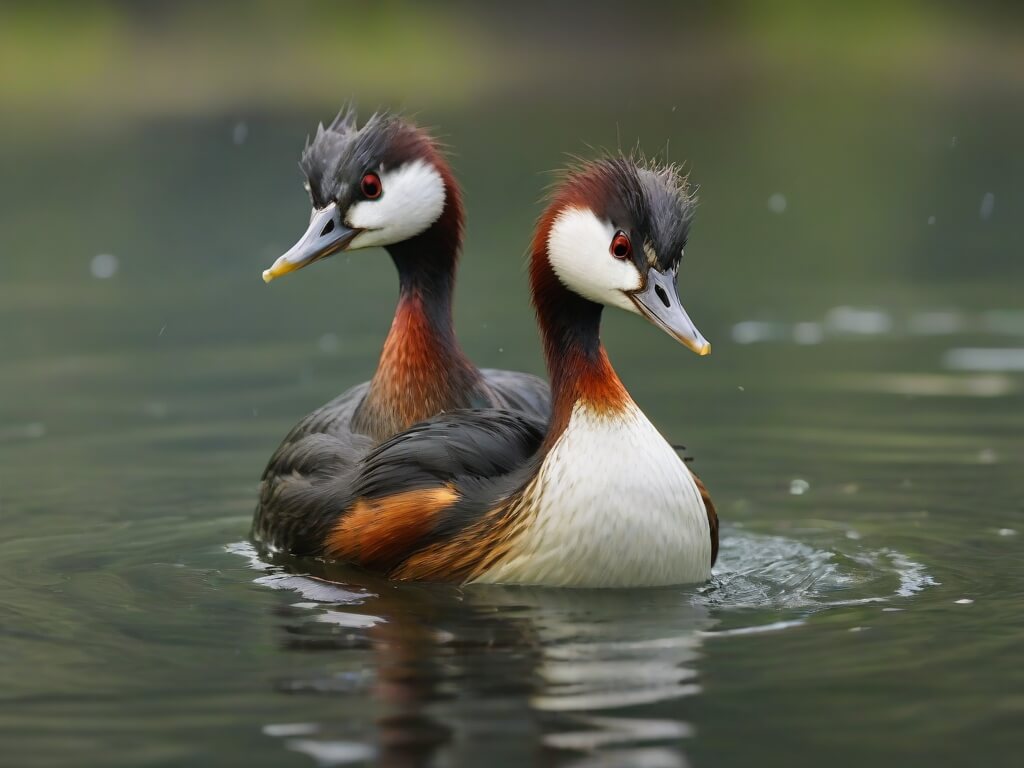Dive into the fascinating realm of Grebe birds! Discover key information on their unique features, behavior patterns, and preferred habitats in this comprehensive post.

Grebe; any of a family of freshwater diving birds with legs set so far back on the body that the birds cannot walk upright on land. They have laterally flattened tarsi (ankles) and uniquely lobed feet used to propel themselves through water. There are about 20 species of these rather primitive birds, making up the family Podicipedidae of the order Podicipedi-formes. They are found in freshwater ponds, lakes, and slow-moving streams on all the continents except Antarctica.
Grebes are 9 to 29 inches (23-74 cm) long. The males are usually larger than the females, but the sexes are alike in coloring. They are usually gray, brown, or black above; most are white below with a white bar (speculum) on the upper surface of the wing. Brighter body plumage and elaborate head plumes are present during the breeding season.
The wings of grebes are relatively small, and flight is labored with rapid wing beats; at least one species is flightless. The size and shape of the grebe’s bill and neck vary in relation to its feeding habits. Small species, which feed largely on invertebrates, are chunky with short necks and bills, while larger, fish-eating species are slimmer and have long bills and necks. Most grebes catch their prey underwater. The larger species also eat their own feathers and feed them to their young.
Courtship among grebes is unusual in that both partners participate in elaborate displays that include head shaking, weed holding, preening, wing flashing, and, most spectacularly, an upright “penguin dance,” or rushing at high speed over the water. The displays are sometimes accompanied by vocalizations. One species is colonial, but most pairs are solitary.
The grebe nest is a soggy, occasionally floating platform of aquatic weeds and leaves. The two to eight eggs are white, bluish, or greenish and covered with a chalky substance. In all but one species, the young are conspicuously striped. They are cared for by both parents.